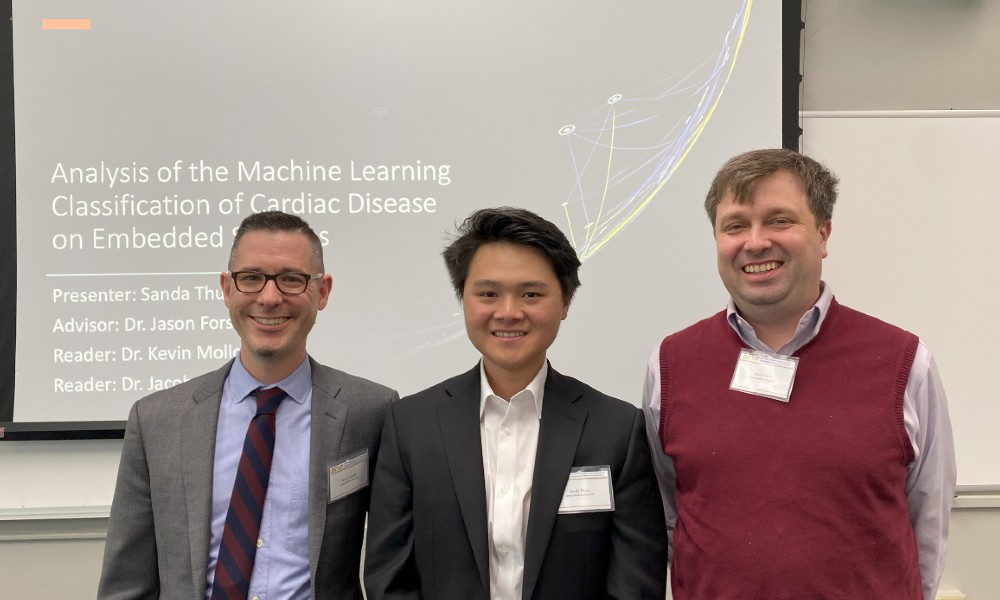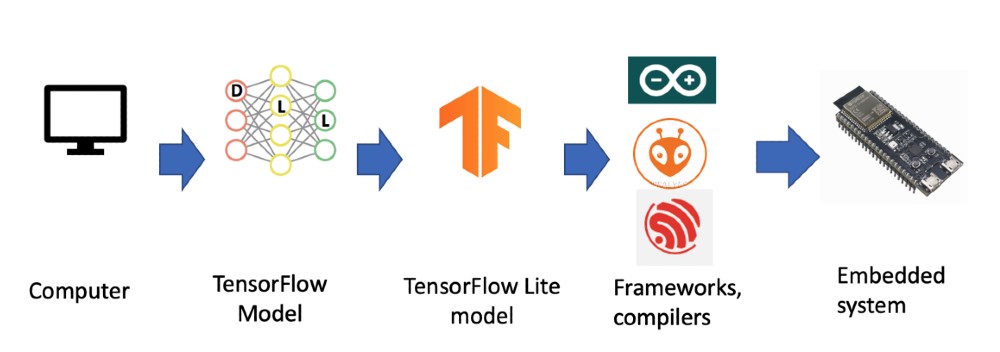Computer Science student uses machine learning to detect heart disease
News
Early diagnosis of heart disease can change and save lives. Unfortunately, in developing countries, barriers to health care prevent this early diagnosis and treatment.
Sanda Thura, a Computer Science major, chose to focus his honors thesis on finding a way to improve early detection of heart disease in developing countries.
Thura’s research investigates the performance of a machine learning model in detecting and diagnosing cardiovascular disease utilizing a wearable device. He hopes his research will lead to the creation of an affordable and accurate wearable device that is accessible to people in countries where medical care is scarce.
“I thought, what if I can make a device using my knowledge to help people with heart disease before something tragic happens?” Thura said.
Thura’s research was advised by Jason Forsyth, professor of Engineering, Kevin Molloy, professor of Computer Science, and Jacob Couch, a senior research scientist at Johns Hopkins University’s Applied Physics Lab.
Thura and Forsyth worked with a data set created by doctors that classifies heartbeats as normal or abnormal. This type of machine learning can be done on a larger computer, but Thura’s ambition is to pare it down to a smaller, embedded system computer to create a wearable device like a watch or a ring that someone can use every day.

Model Implementation Pipeline Showing the Progression from Desktop to Embedded System Implementation
“The research is really, can we maintain adequate system performance when we reduce it to a different computer system?” Forsyth said.
There are many different methods of machine learning. Thura and Forsyth’s approach uses convolutional neural networks, a model of machine learning inspired by how the brain and neurons operate. Forsyth said the trouble with this method is that you need to have a large amount of training data to make it work well.
“I think one of our limitations is we need a much larger data set to improve our training,” Forsyth said.
One vital focus of this cross-disciplinary research project is how to solve both the computer science challenges and engineering challenges simultaneously.
“We have a very hard computer science problem of how to train this algorithm,” Forsyth said. “But we also have a very hard engineering problem of, how do I make this [device] low cost and low power?”
“I think that’s what’s really interesting to me, is that we’re at this intersection of both disciplines where there’s a challenge, and both disciplines can contribute to that solution,” Forsyth said.
The preliminary results of Thura’s research have been promising so far. The machine learning model has proven itself with high accuracy in detecting and diagnosing cardiovascular disease. If the results hold up in future research trials, it is anticipated that this method can be put to practical use in developing countries.
Thura presented his research at the Systems and Information Engineering Design Symposium Conference in Charlottesville, Virginia, on April 28.
Since Thura graduated in May, he will pass his project on to another student to continue the research and development of the idea. Thura said he is proud of his role in proving this idea is possible and giving future researchers a stable foundation to work from.
“I know the future generation is going to come up with an even better approach or technique, but I gave them the groundwork so they can build on it,” Thura said.
